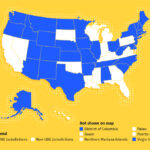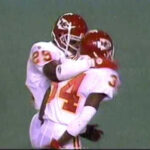The 1980s were a transformative decade for the U.S. Army, marked by significant shifts in global politics and military strategy. This era, deeply entrenched in the Cold War, saw corresponding evolutions in the 1980s Us Army Uniform, reflecting both practical needs and evolving military doctrine. Understanding the uniforms of this period provides valuable insight into the army’s readiness, technological advancements, and the overall aesthetic of the time.
The most iconic and widely recognized 1980s US Army uniform is undoubtedly the Battle Dress Uniform (BDU). Adopted in 1981, the BDU marked a significant departure from the olive drab fatigues that had been standard for decades. The BDU featured a disruptive camouflage pattern, known as woodland camouflage, designed to enhance concealment in varied environments, particularly forested and jungle terrains that were still relevant concerns during the Cold War. This camouflage pattern, with its mix of greens, browns, tans, and black, became synonymous with the U.S. military throughout the 1980s and into the early 1990s.
Image alt text: US Army engineers constructing a platform, demonstrating field operations and the woodland camouflage BDU uniform of the 1980s.
The BDU was not just about camouflage; it was also designed for practicality and durability. Made from a 50/50 nylon-cotton blend, it offered a balance of breathability and resilience. The uniform consisted of a jacket and trousers, both featuring multiple pockets for carrying essential equipment. Reinforced elbows and knees added to the uniform’s durability in demanding field conditions. The cut of the BDU was also looser and more comfortable than previous uniforms, allowing for greater freedom of movement, a crucial factor for soldiers in combat or training.
Beyond the BDU, the 1980s US Army uniform repertoire included dress uniforms for formal and semi-formal occasions. The Army Green Service Uniform, often referred to as “Class A” uniforms, remained a staple for ceremonies, parades, and office wear. These uniforms, while less frequently seen in popular media compared to the BDU, were essential for maintaining military decorum and representing the army in official settings. A lighter version, the “Class B” uniform, typically involved the same green trousers or skirt but replaced the jacket with a short-sleeve shirt, offering a more comfortable option for warmer climates or less formal office environments.
Image alt text: Portrait of a female soldier in Class A US Army uniform, highlighting the standard dress uniform of the 1980s era military personnel.
Key features of the 1980s US Army uniform philosophy included a focus on functionality and standardization. Rank insignia, unit patches, and qualification badges were clearly displayed, maintaining the army’s hierarchical structure and traditions. Headgear ranged from berets and patrol caps in the field to service caps for dress uniforms, each serving a specific purpose and contributing to the overall visual identity of the soldier.
In conclusion, the 1980s US Army uniform encapsulates a pivotal period in military history. The introduction of the BDU marked a significant shift towards modern camouflage and functional design, while the continued use of service uniforms upheld the traditions and formal requirements of the army. Studying these uniforms offers a tangible connection to the Cold War era and the evolving needs of the U.S. Army during that time.


